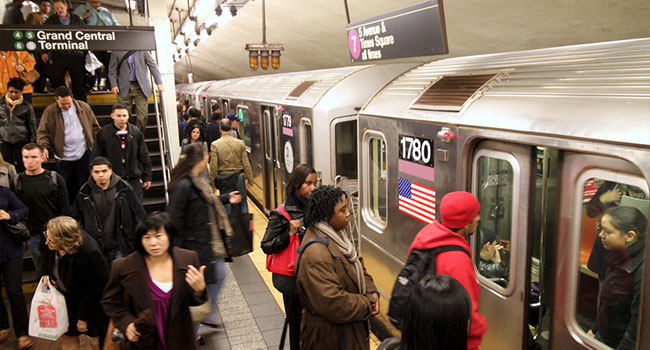
Group Sues New York City MTA For Records On Facial Recognition Use in Subway Station
The Metropolitan Transportation Authority maintains that it has not used facial recognition on riders, but privacy advocates want records related to the technology the agency purchased.
- By Haley Samsel
- Jan 10, 2020
A New York privacy advocacy group is suing the New York City Metropolitan Transportation Authority for records relating to the agency’s installation of surveillance camera tech in a subway station last year.
The lawsuit, filed on Jan. 6 by the Surveillance Technology Oversight Project (S.T.O.P.), was prompted by the April 19 tweet of a New York Times employee who noticed a Wisenet monitor of riders as they entered the Times Square-42nd Street/Port Authority Bus Terminal. The photo showed yellow squares drawn over the faces of the passengers, leading many to suspect that the surveillance cameras were using facial recognition technology.
S.T.O.P. filed a public information request for documentation of the surveillance cameras’ capabilities in April, which the MTA did not respond to, according to the organization.
“New Yorkers deserve to know if the MTA is using invasive new spy tools,” Albert Fox Cahn, the executive director of S.T.O.P., said in a statement. “More than eight months ago, we submitted a straightforward request, but since then we’ve received nothing but evasion and stonewalling.”
The MTA has repeatedly denied that the Wisenet monitors had facial recognition capability. In a statement, MTA spokesperson Shams Tarek reiterated the agency’s position.
“There is absolutely no facial recognition component to these cameras, no facial recognition software, or anything else that could be used to automatically identify people in any way, and we have no plans to add facial recognition software to these cameras in the future,” Tarek said. “ Beyond that, it’s our policy not to comment on pending litigation.”
Wisenet does offer facial recognition technology cameras, but it is not clear if that was the product purchased by the MTA. When the tweet was shared last year, the MTA said the video monitor was intended to scare people from turnstyle jumping, according to The New York Daily News.
But Cahn maintains that the agency should have to produce records showing what it purchased and what its intended purpose was.
“If the MTA was telling New Yorkers the truth about their facial recognition systems, then why has it taken nearly a year to get the documents that prove it?” Cahn said.
About the Author
Haley Samsel is an Associate Content Editor for the Infrastructure Solutions Group at 1105 Media.